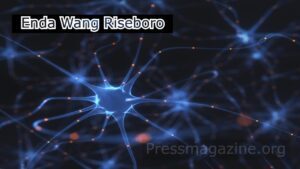Imagine a world where every design decision centers around people, where the needs and aspirations of communities guide the development of solutions. This is precisely the vision of Enda Wang Riseboro, an innovator whose journey has redefined how we approach design thinking. Through his efforts, not only have spaces transformed, but lives have been enriched. Let’s uncover the ethos that drives his mission, and how it can inspire a shift in our perspectives towards addressing societal challenges.
Who is Enda Wang Riseboro?
Enda Wang Riseboro is one of those names that echoes in the world of design. You might be wondering, what makes his journey so captivating? Let’s explore his roots, his career milestones, and the innovative projects he has crafted throughout his journey.
A Brief Biography: Roots and Influences
Born on May 10, 1985, Enda grew up in a vibrant environment that heavily influenced his approach to design. What does that mean for him? His surroundings shaped his vision, encouraging him to think of design as a community affair. Picture a young boy, surrounded by art and culture, absorbing it all like a sponge.
His education provided him with the tools to refine what he innately felt. Engaging in community-based projects early on opened his eyes to the value of connecting with people. It wasn’t just about aesthetics for Enda; it was about crafting something meaningful. His mantra?
“Design should breathe the essence of its community.” – Enda Wang Riseboro.
Key Milestones in His Career
Enda’s career spans over 15 years, marked by several impressive milestones. He started off small, working on local projects that made a tangible impact. Have you ever been part of something that shifts the way you see the world? That’s what Enda experienced, and it fueled his passion.
- First Projects: His earliest designs were prototypes aimed at improving community spaces. Imagine a park reimagined through the lens of collaboration.
- Recognition: Over the years, his efforts did not go unnoticed. Enda garnered awards for his innovative designs, reinforcing the belief that design can indeed serve a higher purpose.
- Current Endeavors: Today, he leads a team focused on integrating sustainability into design. It’s not just about what looks good; it’s about what’s good for the planet.
Exploring Early Projects and Prototypes
Let’s take a peek into Enda’s early projects. They serve as a testament to his commitment to community-driven design. Can you visualize it? A collaborative space where ideas flourish, and community members share their visions.
From community gardens to public art installations, Enda’s prototypes were not only visually appealing but also functional. Imagine a gathering place where people come together to share stories and experiences. That’s the essence he captured in his work.
The Influence of Upbringing on Design Philosophy
Growing up in a dynamic setting had profound effects on Enda’s outlook. He learned to appreciate diversity and the intricate stories behind each culture. This melting pot of ideas significantly shapes his design philosophy. It emphasizes inclusivity and user experience.
Every design he creates respects the community it serves. There’s a memorable quote that encapsulates this idea:
“Design should breathe the essence of its community.” – Enda Wang Riseboro.
Charting Enda’s Journey
Here’s a visual representation of Enda’s journey:
| Date of Birth | Years Active in Design |
| May 10, 1985 | 15+ Years |
In summary, Enda Wang Riseboro stands as a remarkable figure in design, forever impacting how we perceive creativity in relation to community needs. His life exemplifies the saying that great design doesn’t just emerge from individual flair but from a genuine connection to those it serves.
So, what can you take away from his story? Maybe it’s the idea that your environment can shape your choices. Maybe it’s that design can be a force for good. Whatever it is, let Enda’s journey inspire you to infuse your work with purpose.
The Philosophy Behind Human-Centric Design

Let’s dive into the world of human-centric design. What does it really mean? At its core, this concept centers around creating solutions that prioritize the needs and experiences of people. Human-centric design advocates for a deep understanding of users and considers their desires, preferences, and problems. It’s about more than just functionality; it’s about creating a meaningful impact in people’s lives.
Defining Human-Centric Design and Its Core Values
So, what values make up human-centric design? Here’s a simple breakdown:
- Empathy: Understanding the feelings and perspectives of users is crucial. This drives designers to create solutions that resonate with real-world experiences.
- Inclusivity: Design should cater to everyone, ensuring accessibility regardless of age, ability, or background.
- Iteration: It’s about continuous improvement. Testing, feedback, and adapting are vital to evolving designs that meet user needs.
In short, human-centric design is about crafting supportive environments. Think of it like tailoring a suit – it should fit perfectly and feel comfortable.
The Role of Empathy in Design Processes
Why is empathy so important? Imagine you’re designing a product for someone. If you don’t put yourself in their shoes, how can you truly understand what they need? Empathy fosters connection. It leads to innovation because when you genuinely understand people’s pain points, you can create effective solutions.
Consider how empathy influences the design journey:
- Research: Observing users in their environments helps gather insights about their interactions.
- Feedback: Collaborating with users through prototypes allows designers to refine their ideas based on real input.
- Emotional connection: Solutions that evoke positive feelings often lead to greater satisfaction and loyalty.
For instance, think of Airbnb. By emphasizing host and guest experiences, they transformed how we connect with others through travel.
Real-World Applications and Success Stories
Let’s look at some remarkable examples of human-centric design:
- Apple: Their focus on user experience makes products intuitive and delightful to use. Everything from the iPhone to their retail stores is designed with people in mind.
- Google: Through extensive user testing, they ensure their tools are accessible and cater to the needs of various users.
- IDEO: This design firm pioneered human-centered design and is known for its innovative approaches in creating solutions for industries ranging from healthcare to education.
These companies illustrate that human-centric design isn’t just good for people; it’s good for business too. When you focus on people, you drive innovation and pave the way for social change.
Human-centric design sits at the intersection of empathy and innovation. It’s a movement that challenges traditional design practices, pushing towards a more thoughtful and impactful approach. As we think about the future, ask yourself: How can you incorporate these principles into your work? What will your next project look like, if it truly centers on the user?
Case Studies of Success: Enda’s Notable Projects

Enda’s projects have changed lives. They’ve transformed neighborhoods into hubs of activity. But how did they do this? Let’s take a closer look at two remarkable projects undertaken by Enda. These projects have made a significant impact on their communities, fostering engagement and connection.
1. Community Garden Initiative
The Community Garden Initiative aimed to bring people together. People from diverse backgrounds collaborated to create gardens in vacant lots. This effort not only beautified the area but also provided fresh produce. Imagine walking in a community where bright flowers bloom, and the air smells of fresh vegetables! A vibrant community is a testimony to what a little effort can accomplish.
- Transformative Effect: The gardens provided food access and a space for social interaction. Neighbors gathered to share gardening tips and recipes.
- Community Feedback: Residents noted a sense of ownership. One community member shared, “Planting with my neighbors made me feel like I truly belong here.”
2. The Local Arts Program
This program helped unleash local talent. Artists were invited to showcase their art in public spaces. It not only promoted creativity but also drew visitors from other areas. Art can speak in ways words cannot. The streets became a canvas, reflecting the community’s rich culture.
- Impact: The program resulted in a noticeable increase in foot traffic in the local area, benefiting nearby businesses.
- Community Voice: An artist participating in the program said, “It allowed me to express my culture. I felt seen and appreciated.”
Each of these projects underscores a vital point. They aren’t just about physical changes. They’re about making real connections. As Enda wisely noted,
“Every project is a testament to the power of community collaboration.” – Enda Wang Riseboro.
Project Outcomes
These projects have not only revitalized spaces but also empowered voices that were previously unheard. For instance, Project X led to a 25% increase in community engagement. This metric speaks volumes. It tells us that when you engage individuals, they become part of a shared mission—and the impact is transformative.
| Project | Outcome |
| Project X | 25% increase in community engagement |
What happens when a community unites? You witness the blossoming of creativity and connection. You see neighbors become friends. Simply put, you watch a community flourish. Each project initiated by Enda tells a story—a story of resilience and hope. How fascinating is it to realize that from simple ideas emerge such profound change?
These case studies show us that with a bit of community spirit and collaboration, any neighborhood can become a thriving hub. The efforts taken by Enda and the participants serve as powerful reminders of what can be achieved when people come together. So, what project will you champion in your community? The possibilities are endless!
Challenges Faced in Social Design Initiatives

When you think about social design initiatives, what comes to mind? Maybe it’s the colorful murals in a neighborhood or a community garden flourishing with fresh vegetables. These designs aim to enhance the lives of people, but they often run into a variety of challenges. Understanding these barriers is key to crafting sustainable projects that truly resonate with the community. Let’s dive into the main obstacles that can hinder these initiatives.
1. Common Barriers to Implementing Designs
Have you ever tried to solve a problem, only to find that the solution you thought would work doesn’t? That’s the kind of challenge many face in social design. Some common barriers are:
- Community Involvement: Sometimes, having voices from the community is easier said than done. Ensuring that a wide range of perspectives are considered can be tough.
- Limited Understanding of Needs: Not every designer understands the unique needs of a community. This can lead to designs that miss the mark altogether.
- Logistical Issues: Finding the right location, materials, or permits can feel like a maze. It’s often a frustrating tangle that halts progress.
These barriers create a disconnect between the designs and the actual needs of the community. But they are not insurmountable. With patience and consistent dialogue, these challenges can be addressed head-on.
2. Tackling Skepticism and Resistance to Change
Change can be scary. Imagine introducing a brand-new idea to a community that is used to doing things a certain way. You might hear, “Why fix what isn’t broken?” This skepticism can be a significant barrier. It’s important to consider:
- Building Trust: Community trust is fragile. Consistency can help in building it back. People need to see that their needs are being taken seriously.
- Communication: Clear communication about the goals and benefits of the initiative is essential. Are you speaking in terms they understand?
- Involving Stakeholders: Get local leaders or influencers onboard early. When respected community members vouch for the initiative, it can sway public opinion.
Addressing skepticism is vital for project success. After all, if people don’t believe in your vision, they’re unlikely to support it.
3. Funding and Resource Allocation Issues
Ah, funding—the lifeblood of any project. It’s often limited and must be carefully allocated. Here are some common problems:
- Limited Budget: Many social design initiatives operate on shoestring budgets. Finding ways to stretch those dollars further is crucial.
- Resource Scarcity: Not having the right tools, materials, or manpower can significantly stall progress.
- Grant Dependability: Relying on grants can be tricky. What if funding doesn’t come through?
Financial models that support community projects can help alleviate some of these issues. Collaborating with local businesses or even crowd-funding can provide an extra push.
Understanding the Challenges
Ultimately, acknowledging these obstacles is crucial for creating lasting social design initiatives. Each challenge presents an opportunity for improvement and innovation. With a collaborative mindset and a willingness to adapt, your efforts can resonate with the very individuals you aim to serve.
When you grasp these challenges, you empower yourself to shape initiatives that truly meet community needs. It’s not about the design alone; it’s about fostering connections and creating frameworks that thrive in the long run.
The Intersection of Technology and Community Engagement

Have you ever thought about how technology can shape communities? It’s fascinating, isn’t it? In our tech-driven age, marrying technology with human-centered design can yield powerful outcomes. Let’s explore how tech enhances our interactions within communities, making participation and engagement more effective than ever.
How Technology Enhances Human-Centric Design
At the core of human-centric design is the belief that people’s needs come first. Technology acts as a conduit for this principle. From mobile apps to virtual reality, tech provides tools that help designers create experiences focused on the user. This means:
- Accessibility: Technology helps break down barriers. With online platforms, individuals across different backgrounds can engage and share their thoughts.
- User Feedback: Digital prototypes allow users to interact and provide feedback during the design process.
- Custom Solutions: Tailoring designs to meet specific needs becomes easier with advanced tech tools.
Imagine visiting a web page where everything is designed based on your preferences. Cool, right? That’s the power of technology in human-centric design.
Platforms That Facilitate Community Feedback and Co-Design
Community engagement goes beyond just collecting feedback. It’s about involvement. Platforms like Slack, Trello, and Miro enable collaboration. They facilitate discussions where everyone gets a seat at the table.
Some key features of these platforms include:
- Real-Time Communication: Instant messaging helps communities stay connected.
- Visual Collaboration: Tools like Miro allow users to map out ideas visually, which fosters creativity.
- Structured Feedback: Improved surveys and feedback tools offer structure to discussions to ensure everyone’s voice is heard.
When community members engage on these platforms, they feel valued. It’s like providing them a megaphone to amplify their voices. What would you say if you had that power?
The Role of Data in Shaping Community-Based Solutions
Data isn’t just numbers; it tells a story. When we collect and analyze data, we uncover insights about community needs. Here’s how data shapes community solutions:
- Identifying Needs: Surveys and data analysis reveal what the community lacks.
- Monitoring Progress: By tracking data over time, organizations can see the impact of their solutions.
- Optimizing Resources: Data helps in allocation, ensuring resources serve the community effectively.
Think of data as a map. With the right tools, it can guide decisions that enhance community well-being.
Examining Tech Tools Used by Design Professionals
Design professionals today have a plethora of tools at their disposal. Software like Adobe XD allows easy prototype creation, while Figma facilitates collaborative design. These tools help drive human-centric experiences efficiently.
Each tool aims to support and streamline the design process. As tech evolves, so do the possibilities for creating impactful community solutions and engagement strategies.
Finding the Balance Between Tech and Human Input
However, is technology the only answer? Absolutely not! There’s a delicate balance. Too much tech can alienate individuals who prefer face-to-face interaction. It’s about finding what works for your community. The goal is to complement, not replace, human interaction.
Ultimately, using technology to promote inclusivity fosters a sense of belonging. And in the end, isn’t that what community is all about?
“In a tech-driven age, merging technology with human-centric design can yield powerful outcomes.” – Anonymous.
As we navigate this intersection of technology and community engagement, you have the power to decide which approach resonates with you. Are you ready to harness tech for your community’s betterment?
Future Trends in Human-Centric Design

The world of design is continuously evolving. As society progresses, so do our values and needs. How will these shifts impact our approach to design? Let’s explore the emerging trends in human-centric design that focus on communities, the role of younger generations, and what the future holds for social impact design.
Emerging Trends in Community-Focused Design
More designers are turning their attention to community-focused design. Why? Because design isn’t just about aesthetic; it’s about ensuring that spaces work for the people who inhabit them.
- Inclusivity is Key: Current design trends prioritize inclusivity. Spaces are being crafted to welcome everyone, regardless of background.
- Environmental Awareness: Designers are now considering the environmental impact of their choices. Materials that are sustainable are becoming the norm.
- Collaborative Spaces: More community hubs are being built. These allow for shared ideas and creativity.
Imagine a park that encourages art exhibits and markets to promote local artists. These spaces bring communities together. It’s a win-win!
The Role of Younger Generations
What about the younger generations? They’re not just passive consumers of design; they’re active participants. With their unique perspectives, they are shaping the future of design.
- Technology Integration: Young designers are tech-savvy. They want to create interactive, digital experiences within physical spaces.
- Focus on Well-being: Mental health awareness is crucial for this generation. Spaces are being designed with personal well-being in mind.
- Advocacy for Change: Younger individuals are vocal about social issues. They demand that designs promote equity and justice.
Considering their influence, it’s essential to engage these young minds. They offer insights that can drive meaningful change in many sectors.
Predicting the Future of Social Impact Design
As we look ahead, what can we expect in the realm of social impact design? This area is dynamic, adapting as societal needs evolve. Here are some predictions:
- Increased Collaboration: Designers will increasingly team up with community members to co-create.
- Measurable Impact: Empirical studies will play a role in design choices. Impact will be evaluated and assessed.
- Emphasis on Education: Educational programs will highlight the importance of social impact. Aspiring designers will be trained to consider it.
Imagine a future where design thinking is taught in schools as a form of activism. Young people using design as a tool to address issues in their communities could bring tremendous change.
Shifts in Societal Values
One cannot overlook the significant shifts in societal values. People are becoming more conscious of how design affects their lives. This awareness is reshaping priorities in the design field.
“The future belongs to those who prioritize people in their designs.” – Enda Wang Riseboro. This quote embodies the growing sentiment in the design community. It emphasizes placing community needs at the heart of the design process.
Exploring Pathways for Aspiring Designers
For aspiring designers, educational pathways are crucial. Schools are beginning to offer more programs that focus on human-centric practices.
What skills should emerging designers focus on?
- Cultural Competency: Understanding diverse perspectives is key.
- Technical Skills: Learning tools for digital design is becoming increasingly important.
- Problem-Solving Mindset: Ability to think critically and creatively about solutions will stand out.
By equipping themselves with these skills, they can become effective change-makers in their communities.
The ever-adapting landscape of human-centric design promises innovative solutions driven by future generations. Ready to join the movement?
FAQs About Human-Centric Design and Enda Wang Riseboro’s Work
What is Human-Centric Design?
Human-centric design is a method of designing products, services, and systems by prioritizing the needs, preferences, and experiences of users. It’s about creating solutions that are tailored for people, rather than forcing people to adapt to existing solutions. Imagine designing a park.
Instead of just placing a few benches and trees, you would think about:
- What do people want to do there?
- How do they navigate the space?
- What makes them comfortable or happy?
This process requires empathy and a deep understanding of the target audience. Unlike traditional design that often focuses more on aesthetics or functionality, human-centric design fosters a connection between the user and the product. It asks key questions like:
- How does this solution make the user feel?
- Does it solve their problems effectively?
How Does Enda’s Approach Benefit Communities?
Enda Wang Riseboro is a prime example of someone who champions human-centric design. His work focuses on fostering community engagement and empowerment through thoughtful designs. You might wonder, how exactly does this benefit communities?
Here are a few ways:
- Empowerment: Enda’s designs often encourage residents to take pride in their surroundings. For instance, community gardens designed with input from locals can not only yield fresh produce but also strengthen community bonds.
- Accessibility: His approach ensures that everyone, regardless of ability, can access public spaces. It’s about making areas conducive for all, from children to seniors.
- Sustainability: Community-focused design often incorporates sustainable practices. If a local park is designed with native plants, it requires less maintenance and supports local ecology, benefitting everyone.
What Can Aspiring Designers Learn from His Journey?
If you dream of pursuing a career in design, Enda’s trajectory is inspiring. Here’s what you can take away from his journey:
- Listen: Always listen to the community you are designing for. Understanding their needs and desires can lead to innovative solutions.
- Collaborate: Work with other professionals and community members. Teamwork opens up opportunities for diverse ideas and collaboration can lead to creative breakthroughs.
- Remain Flexible: Enda teaches us that a designer’s work is never done. Be ready to adapt your designs as you receive feedback. Iteration is key!
- Advocate for Users: As a designer, your role is to advocate for the users. This means putting their needs above all else and striving for solutions that truly benefit them.
Real-life Examples of Community Benefits
Have you seen a park that seemed to inspire joy? That’s often the result of human-centric design. Enda might collect input directly from users through workshops, ensuring their voices are heard in the design process.
Whether it’s through designing functional community spaces or reimagining neglected areas, his work shows the tangible impact human-centric design can have. More than just building structures, it’s about creating environments where people feel involved, connected, and happy.
“Design is not just about what it looks like and feels like. Design is how it works.” – Steve Jobs
In the end, understanding human-centric design is not just for those in the field. It gives everyone insight into creating better, more inclusive experiences in their communities. And if you remember one thing from Enda’s approach, it’s this: great design starts with great listening.
Conclusion: Embracing a Human-Centric Future
As we wrap up, it’s essential to reflect on Enda’s journey. He has shown us the power of a human-centric approach. His philosophy has shaped not only his own path but also the experiences of those around him. Enda’s journey encourages everyone to rethink how we design our world. It’s about putting people first — their needs, their challenges, and their potentials.
The Essence of Enda’s Philosophy
Throughout his career, Enda emphasized a fundamental principle:
“Design should serve humanity, not the other way around.”
This quote encapsulates everything that Enda stands for. It reminds us that every design decision we make impacts real lives. We need to ask ourselves: how can we make choices that truly benefit others?
Encouragement to Adopt Human-Centric Principles
You, too, can adopt these principles in your life and work. Here are several ways to do just that:
- Listen Actively: Pay attention to feedback from those you serve.
- Put People First: Consider human needs before technical features.
- Be Persistent: Change takes time. Keep pushing for improvements.
- Collaborate: Work with others to explore diverse perspectives.
These simple yet powerful actions can lead to significant improvements in your community or workplace.
Future Implications on Society and Design
Looking ahead, adopting human-centric philosophies can transform our communities, leading to more inclusive and accessible environments. Imagine a future where every design decision focuses on enhancing the human experience. What does that look like to you?
It’s about more than just aesthetics. It’s about building a society where everyone feels valued and heard. Each of us has a role to play. It’s a shared responsibility.
Implementing Change in Your Own Work or Community
How can you implement these ideas? Start small. Identify a specific challenge around you. Whether it’s in a community organization, a design project, or even in daily life, view that problem through a human-centric lens. Engage with the people affected by the issue. Solicit their input. What do they really need?
The Importance of Persistence
Persistence is key in driving sustainable change. Like Enda, you may face challenges and setbacks. But that’s normal. *Keep striving*, keep listening, and keep adapting your approach. Over time, these incremental changes can add up to a substantial impact.
The call to action is clear: adopting human-centric philosophies can lead to meaningful societal improvements. You have the power to make a difference, whether in your work, community, or social interactions. So why not start today?
As Enda has shown us, it’s not just about creating solutions. It’s about creating solutions that truly * resonate* with humanity. Embrace this journey, and you’ll see how fulfilling it can be.

